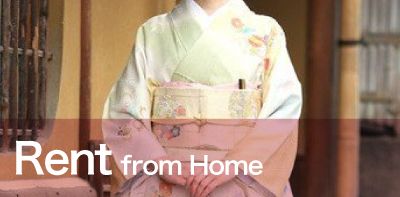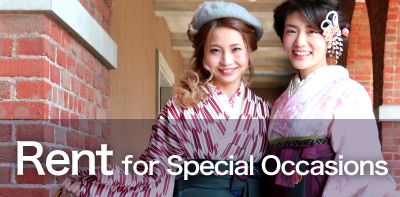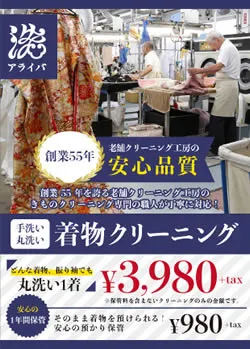Kimono obi
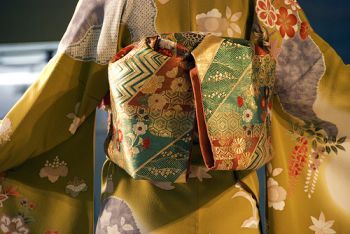
Kimono obi (帯, おび?, literally “sash”) is a sash for traditional Japanese dress, keikogi (uniforms forJapanese martial arts), and part of kimono outfits. They can also be seen as decorative wall hangings or have their fine material used to make varying accessories. There are many types of kimono obi, most worn by women. Obi range from 10cm to 30cm in width but can reach lengths of over 4m. A formal kimono obi can cost more than the entire outfit. All embroidery is by hand and the more brocading the more formal the usage. For several decades now, Japanese women have found Western dress more practical, comfortable and economical than traditional Japanese kimono and obi attire. The trousseau of fine heirloom kimono obi is no longer a part of modern Japanese women’s lives. The decline in the kimonoindustry in Japan has resulted in fewer obis being produced each year. As a fine kimono obi becomes scarce, many of the best obis are considered collector’s items. The most rare and expensive obi is the maru obi. Vintage maru obi is most valuable, as the patina of the gold thread resembles that of an antique tapestry. Newer maru obi, while it is still beautifully designed, does not have the lustre of the older maru obi, perhaps because of the use of synthetic material in combination with silk.
Types of kimono obi
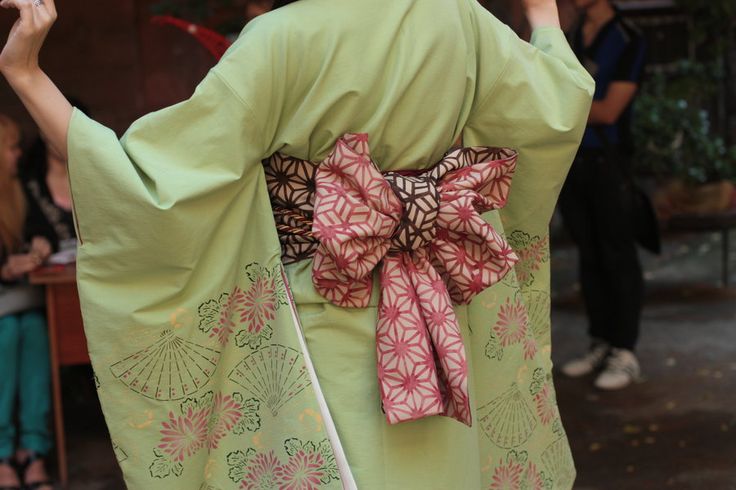
In general, the kimono obi used depends on the type of kimono worn in any given occasion. Most formal are the metallic or colour brocade and tapestry, followed by dyed silk, woven silk, and non-silk obi fabrics. Brocade, tapestry and dyed silk obi are used for formal wear with the finest kimono, while kimono obi made from raw silk, cotton or wool is used for everyday wear.
Maru Obi
The maru obi is the most formal kimono obi, with both sides fully patterned along its length. The classic maru obi measures 33cm wide. Maru obi with narrower width can be custom made for a petite client. The maru obi is usually made of elaborately patterned brocade or tapestry, which is often richly decorated with gold threads. It was most popular during the Meiji and Taisho eras. However, due to its exorbitant cost and weight (which makes it uncomfortable to wear), the maru obi is rarely worn today.
Fukuro obi

The fukuro obi is a slightly less formal style than the maru obi. This kimono obi was created in the late 1920s. The fukuro obi is made with a fine brocade or tapestry, which is patterned along 60% of its length on one side. The back of the fukuro obi may be lined with a plain silk or brocade, making it less expensive and less bulky to wear than the maru obi. Even though the fukuro obi is not as quite formal as the maru obi, the fukuro obi can be used for formal occasions. The length and width of the fukuro obi is the same as the maru obi. Thus, fukuro obi can hardly be distinguished from maru obi when tied over the kimono.
Nagoya obi
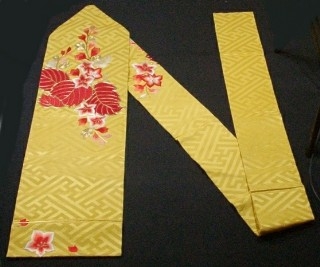
The most convenient kimono obi today is the nagoya obi. First produced in the city of Nagoya at the end of the Taisho era (1912-26), the Nagoya obi is lighter and simpler than the fukuro or maru obi. The nagoya obi is characterised by a portion of the obi being pre-folded and stitched in half. The narrow part wraps around the waist, while the wider part forms the bow of the obi tie. When worn, a nagoya obi is tied with a single fold, while a maru or a fukuro obi, being longer, is tied with a double fold. Most nagoya obi is less expensive a maru or fukuro obi. Nonetheless, its design can be stunning.
Hanhaba obi
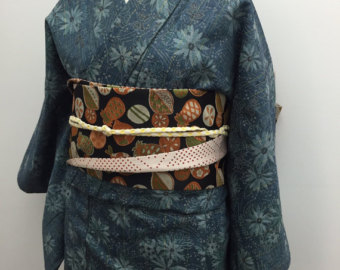
The hanhaba obi is thus termed, as it has half the width of other obis. The hanhaba obi is a casual obi for wear at home, under a haori (kimono coat), with children’s kimono or with summer yukata. The fabric and design of the hanhaba obi are simpler to reflect its use for daily wear. Some of the more ornate hanhaba obi is made from a former maru obi. Children’s hanhaba obi is often in very bright colours. It is often made with stencilling technique, rather than an elaborate embroidery or weaving.
Black obi
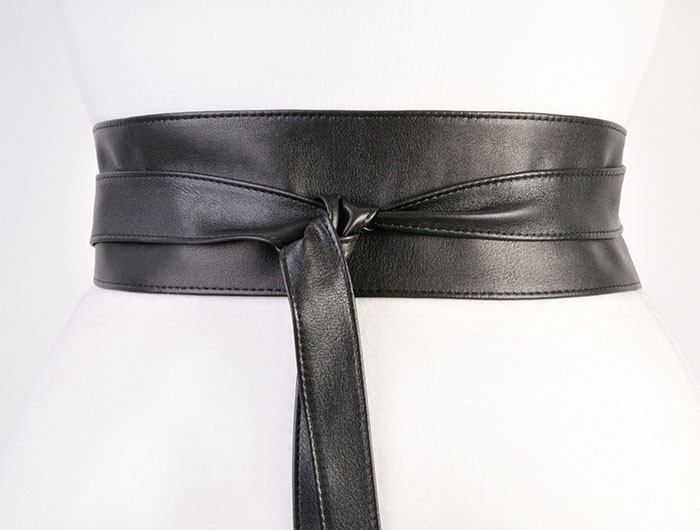
There is also plain black obi, which is often made with the finest silk woven with barely discernable pattern or design. Sombre, yet lovely, plain black kimono obi is worn as part of the mourning attire.
White obi

In a traditional Japanese wedding ceremony, a bride will wear a white kimono obi. In the Edo era, a widow may dress in all white to signify that she will not remarry. Thus, some very old white obi may not have been used for weddings.
Nishijin kimobo obi

The vast majority of kimono obi produced in Japan today comes from a district in Kyoto known as Nishijin. Nishijin has been the centre of the Japanese textile industry since the 15th century. Nishijin is renowned for its brocade, twill and gauze production. In the late 1800’s, jacquard loom was introduced to replace draw loom. The high quality brocade produced by the Nishijin artisans is known as ‘nishiki’, which literally means ‘beautiful colour combination’. Nishiki is characterised by the lavish use of gold and silver threads to make patterns of flowers, birds and traditional geometric designs. Another style of kimono obi produced in Nishijin is ‘tsuzure’ or tapestry. Both brocade and tapestry obis are the most ornate and expensive of all obis.



